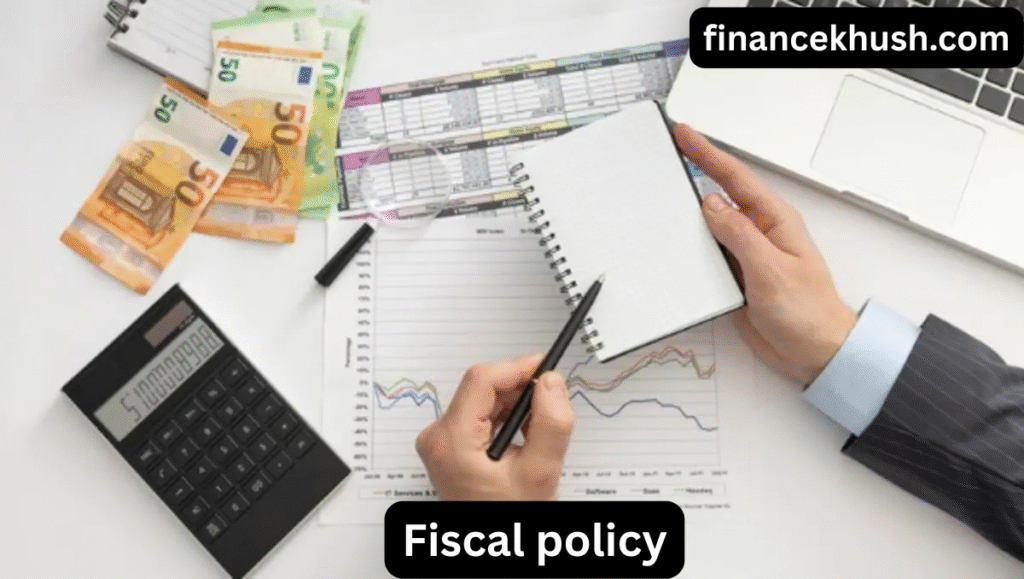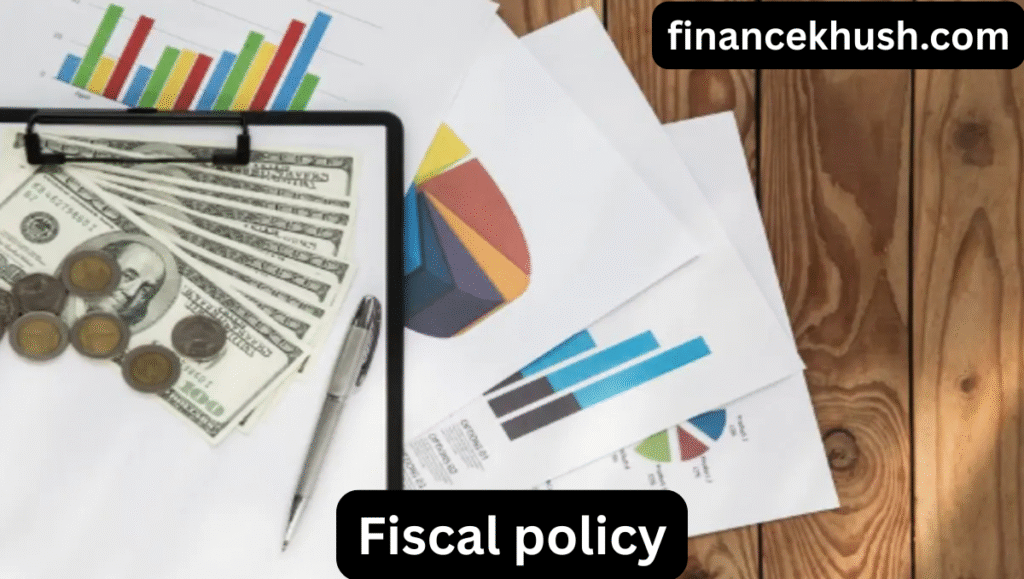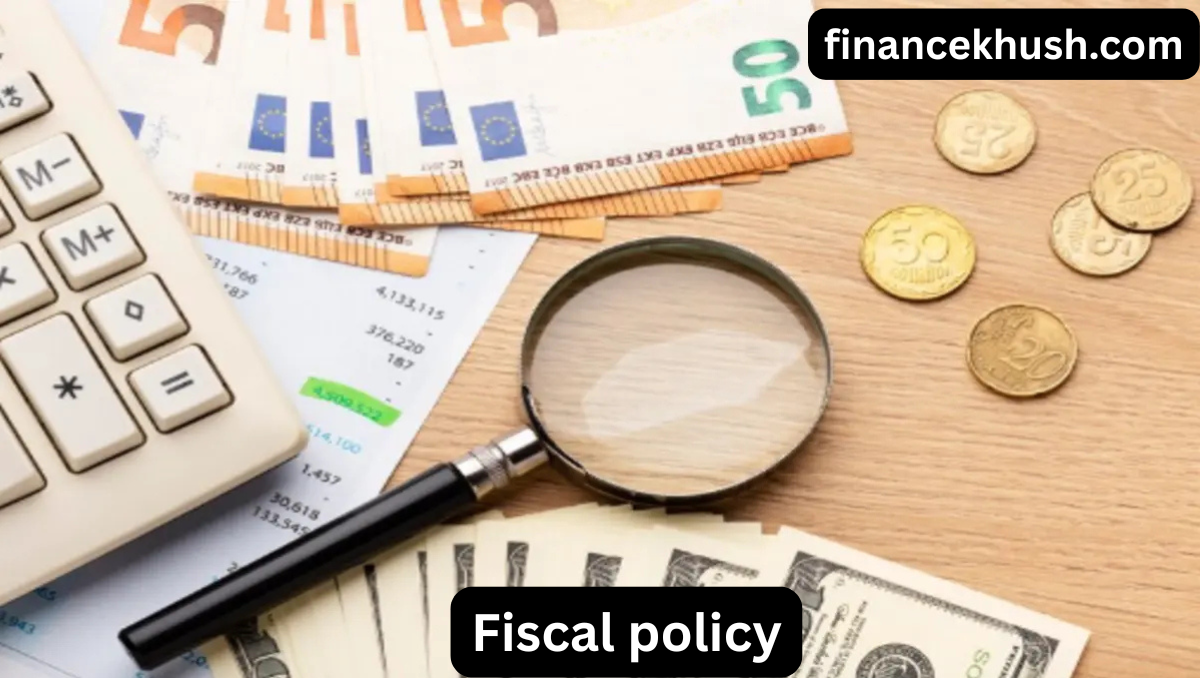Fiscal Policy refers to the use of government spending and taxation to influence the economy. By adjusting how much the government spends and how it collects taxes, fiscal policy can either stimulate economic growth or slow it down. For instance, during a recession, the government may increase spending or lower taxes to encourage spending and investment. Conversely, in times of high inflation, it might reduce spending or raise taxes to cool the economy. Fiscal policy plays a crucial role in maintaining economic stability and promoting long-term growth by balancing government actions with market needs.
Introduction: What is Fiscal Policy?
Fiscal-policy refers to the government’s approach to managing a country’s economy through changes in taxation and public spending. Governments around the world use fiscal-policy to stabilize economic cycles, control inflation, reduce unemployment, and promote sustainable growth. Simply put, fiscal-policy is one of the primary ways in which a government can directly influence the economic conditions of a country.
At its core, fiscal-policy aims to ensure a balanced and healthy economy. When used effectively, it can guide a nation through both periods of economic growth and recession. In this blog post, we’ll break down the key elements of fiscal-policy, examine its types, and explore how it works in real-world situations.
Understanding Fiscal Policy: Key Concepts
Fiscal-policy works in tandem with monetary policy, which is managed by a country’s central bank. While monetary policy involves controlling the money supply and interest rates, fiscal-policy focuses on how the government interacts with the economy through spending and taxation. The goal is to regulate economic activity, ensuring long-term stability and prosperity.
There are two main tools through which fiscal-policy operates:
1: Government Spending
2: Taxation
By adjusting government spending and tax rates, fiscal-policy can influence the level of demand in the economy, either boosting it or slowing it down.
Types of Fiscal-Policy
Fiscal-policy can be broadly classified into two main types: expansionary and contractionary fiscal-policy. Both have distinct goals and methods of implementation.
1. Expansionary Fiscal-Policy
An expansionary fiscal-policy is implemented when a government seeks to stimulate economic activity. This type of policy is typically used during times of recession, economic slowdown, or periods of high unemployment. The goal is to boost demand for goods and services, increase employment, and encourage investment.
Key components of expansionary fiscal-policy include:
- Increasing Government Spending: Governments may choose to invest in infrastructure projects, defense spending, public services, and social programs. Increased public spending helps to create jobs, raise incomes, and stimulate overall economic activity.
- Decreasing Taxes: Lower taxes put more money into the hands of consumers and businesses. When individuals have more disposable income, they tend to spend more, which boosts demand for goods and services.
Expansionary fiscal-policy increases the budget deficit in the short term, as governments spend more than they collect in taxes. However, if successful, it can help revive a stagnating economy and reduce unemployment.
2. Contractionary Fiscal Policy
On the other hand, a contractionary fiscal-policy aims to reduce the level of economic activity. Governments use this type of policy when the economy is overheating, experiencing excessive inflation, or running large fiscal deficits. Contractionary fiscal-policy works by reducing consumer demand and slowing down economic activity.
Key components of contractionary fiscal-policy include:
- Decreasing Government Spending: The government reduces spending on public programs, services, and infrastructure projects. By doing so, demand for goods and services is reduced, which can help cool down an economy that is growing too quickly.
- Increasing Taxes: Higher taxes can discourage consumer spending and business investment, which in turn reduces demand for goods and services.
The goal of contractionary fiscal-policy is to control inflation and stabilize the economy, though it can also lead to increased unemployment in the short term as government projects and programs are scaled back.

The Role of Fiscal-Policy in Managing Economic Cycles
One of the most important functions of fiscal-policy is its ability to smooth out the business cycle. The business cycle refers to the natural fluctuations in economic activity, which include periods of growth (expansion) and contraction (recession). Governments use fiscal-policy to either stimulate the economy during a downturn or cool it down during periods of excessive growth.
Fiscal-Policy in Recessions
During a recession, when economic activity contracts, fiscal-policy can provide the necessary stimulus to boost demand. The government can increase spending on infrastructure projects, public services, and other initiatives that create jobs and increase income levels. Additionally, reducing taxes puts more money in the hands of consumers and businesses, which helps to spur spending.
For example, during the global financial crisis of 2008, many governments implemented expansionary fiscal policies to counteract the downturn. The United States, for instance, passed the American Recovery and Reinvestment Act (ARRA) in 2009, which injected billions of dollars into the economy through government spending and tax cuts.
Fiscal Policy in Booming Economies
In contrast, during periods of rapid economic growth and high inflation, fiscal policy can be used to cool down the economy and prevent overheating. Contractionary fiscal policies can help to control inflation by reducing demand. Higher taxes or reduced government spending can reduce disposable income and business investments, which slows down economic activity and stabilizes prices.
How Fiscal Policy Affects Individuals and Businesses
Fiscal policy doesn’t just affect the macroeconomy—it also has direct consequences for individuals and businesses.
For Individuals:
1: Taxation
Changes in tax rates directly affect the amount of income individuals take home. Lower taxes can lead to more disposable income, allowing individuals to save, invest, or consume more. Conversely, higher taxes can reduce disposable income and spending power.
2: Public Services and Welfare Programs
Government spending on social programs, healthcare, education, and welfare directly impacts individuals. In times of recession, expansionary fiscal policies may increase funding for such programs, providing individuals with more support.
3: Investment and Consumer Demand
When the government increases spending, it often leads to higher demand for goods and services, which can benefit businesses. Expansionary fiscal policy encourages consumer spending and investment, helping businesses grow and expand.
For Businesses:
1: Tax Incentives
Tax cuts or credits aimed at businesses can encourage investment in new projects, equipment, and technology. This not only helps businesses expand but also boosts overall economic productivity.
2: Government Contracts and Infrastructure Projects
Large government infrastructure projects often require private sector participation, which can create new opportunities for businesses. Government spending on infrastructure, defense, or public works provides opportunities for businesses in construction, manufacturing, and services.
Fiscal Policy and Its Limitations
While fiscal policy is a powerful tool for managing the economy, it is not without limitations. Several factors can limit the effectiveness of fiscal policy:
1: Time Lags:
Implementing fiscal policy can take time. Governments must first identify an economic problem, then design and pass legislation, and finally implement the changes. During this time, the economic conditions may change, making the policy less effective or even counterproductive.
2: Political Constraints:
Fiscal policy decisions are often influenced by political considerations. Policy changes may be delayed or watered down due to political disagreements, reducing their effectiveness.
3: Budget Deficits and Public Debt:
Expansionary fiscal policies, especially those that involve increased government spending or tax cuts, can lead to budget deficits and rising public debt. In the long term, high levels of government debt can become unsustainable and may limit the government’s ability to use fiscal policy effectively.

Conclusion:
Fiscal policy is an essential tool in the hands of governments to manage the economy, promote growth, reduce unemployment, and control inflation. Whether through increasing government spending, reducing taxes, or adjusting fiscal balances, fiscal policy can help stabilize economic conditions and guide a nation through various economic cycles.
read more
While it’s not without its limitations and challenges, fiscal-policy plays a crucial role in ensuring that an economy remains resilient in the face of shocks. By understanding how fiscal-policy works, individuals and businesses can better navigate changing economic conditions and make informed decisions that align with national and global trends.
Faq’s
1. What is Fiscal-Policy?
Fiscal-policy is how a government manages its economy by changing its spending and tax policies. It is used to control inflation, reduce unemployment, and promote economic growth. There are two types: expansionary (spending more and lowering taxes) and contractionary (spending less and raising taxes).
2. How Does Fiscal-Policy Affect the Economy?
Fiscal-policy affects the economy by influencing demand for goods and services. For example, when the government spends more on infrastructure or cuts taxes, it boosts demand and stimulates economic growth. On the other hand, increasing taxes or cutting spending can slow down an overheated economy.
3. What Is the Difference Between Expansionary and Contractionary Fiscal Policy?
Expansionary fiscal-policy is used to stimulate the economy during slow periods by increasing government spending or lowering taxes. Contractionary fiscal-policy, on the other hand, is used to cool down an economy that’s growing too quickly by cutting spending or raising taxes.
4. How Can Fiscal-Policy Reduce Unemployment?
Fiscal-policy can reduce unemployment by boosting demand for goods and services. When the government increases spending or lowers taxes, businesses grow and hire more people. This leads to more jobs and lower unemployment rates.
5. Why Do Governments Use Fiscal-Policy?
Governments use fiscal-policy to maintain economic stability. By adjusting taxes and public spending, fiscal-policy helps manage inflation, fight unemployment, and keep the economy on a growth path. It’s especially useful during economic recessions or when the economy is growing too fast.
6. What Are the Risks of Poor Fiscal Policy?
Poor fiscal-policy can lead to economic instability. If a government spends too much without raising enough taxes, it can increase national debt. On the other hand, cutting spending too much can cause a recession, increase unemployment, and lower consumer confidence.
